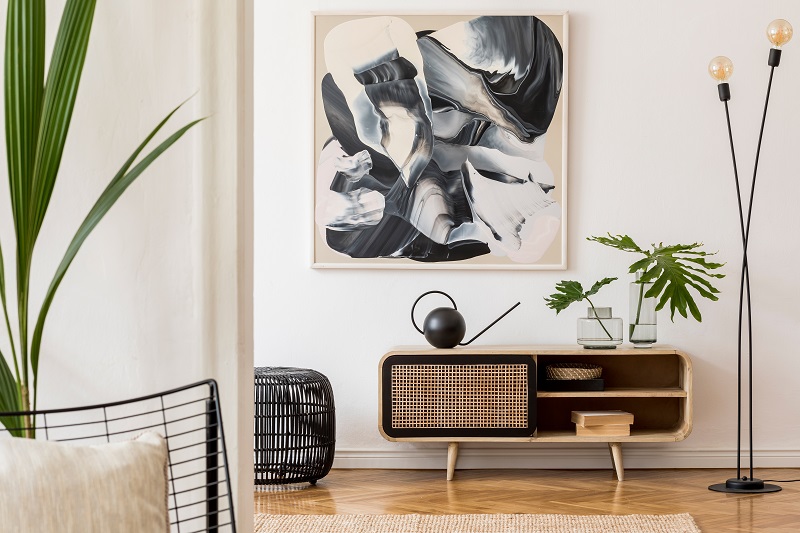Texture in Large Paintings: A Photographer's Perspective
For professional photographers, the exploration of art forms beyond the lens can be both inspiring and enlightening. One such art form that offers a wealth of creative potential is the realm of large paintings, particularly those that emphasize texture. In the world of art, texture is not just a visual aspect but a tactile one, offering depth and dimension that can transform a flat image into a dynamic experience.
When you encounter large paintings with a rich tapestry of textures, its akin to discovering a new world through your camera lens. The interplay of light and shadow on these textured surfaces can provide endless opportunities for capturing unique and compelling photographs. As a photographer, understanding the nuances of texture in large paintings can enhance your appreciation of art and improve your ability to convey emotion and narrative through your work.

The Role of Texture in Art
In the art world, texture serves as a critical element that can alter the viewer's perception and emotional response to a piece. It can be as subtle as the delicate brushstrokes of an Impressionist painting or as bold as the thick, impasto layers found in Expressionist works. The tactile quality of texture invites viewers to not only see but feel the art, creating a connection that goes beyond visual appeal.
For photographers, capturing the texture of a large painting can add depth to an image, making it appear more lifelike and engaging. This can be particularly important when photographing art for reproduction or exhibition, where conveying the original piece's richness and complexity is essential.
How Texture Influences Photographic Technique
When photographing large paintings with significant texture, several techniques can be employed to ensure that the texture is effectively captured. First, consider the lighting. The angle and intensity of light can dramatically affect how texture is perceived in a photograph. Side lighting, for example, can highlight the peaks and valleys of a textured surface, creating a striking contrast that emphasizes depth.
Additionally, the choice of lens and camera settings can play a crucial role. A macro lens, for instance, allows for close-up shots that bring out the intricate details of texture, while a wider aperture can help focus attention on the textured areas by blurring the background. For more practical insights, you might find this article on printing tips for large wall art helpful.
Exploring Different Types of Textures in Paintings
Large paintings can exhibit a variety of textures, each contributing to the overall aesthetic and emotional impact of the artwork. Here are a few common types:
- Impasto: This technique involves applying paint thickly so that it stands out from the surface, creating a three-dimensional effect.
- Collage: Incorporating different materials like paper or fabric into the painting adds varied textures and layers.
- Stippling: Using small dots or dabs of paint to create a textured effect, often seen in Pointillism.
- Scraping: Removing layers of paint to reveal underlying colors and create a textured surface.
Understanding these techniques can aid photographers in capturing the essence of a painting's texture. For those interested in DIY art projects, exploring DIY large wall art ideas can provide further inspiration.
Translating Texture into Photography
For photographers, the challenge lies in translating the tactile quality of texture into a two-dimensional format. This requires a keen eye and an understanding of how light and shadow interact with textured surfaces. By experimenting with different lighting setups, angles, and compositions, photographers can create images that not only capture the physical qualities of a painting's texture but also evoke the same emotional response as viewing the artwork in person.
Furthermore, photographers can take inspiration from resources like wall decor ideas to see how texture plays a role in interior design, providing a broader context for their photographic work.
The Impact of Texture on Art and Photography
The presence of texture in large paintings can transform a simple image into a multi-sensory experience. For photographers, this presents an opportunity to push the boundaries of traditional photography and explore new creative avenues. By understanding and effectively capturing texture, photographers can produce images that resonate with viewers on a deeper, more emotional level.
Whether you're photographing large paintings for an exhibition or incorporating texture into your own creative projects, the potential for storytelling and artistic expression is limitless. For further exploration, consider reading about layering art styles on big walls to see how texture can be combined with other elements to create stunning visuals.

FAQs About Texture in Large Paintings
What is the importance of texture in art?
Texture plays a vital role in art by adding depth and dimension. It enhances the visual and tactile experience, allowing viewers to connect with the artwork on a deeper level.
How can photographers effectively capture texture?
Photographers can capture texture by using side lighting to highlight surface details, employing macro lenses for close-ups, and choosing the right camera settings to emphasize textured areas.
What are some techniques used to create texture in paintings?
Common techniques include impasto, collage, stippling, and scraping. Each method offers a unique approach to adding texture and depth to paintings.
For more insights into the intersection of photography and art, visit our blog for articles on digital art for large display.

